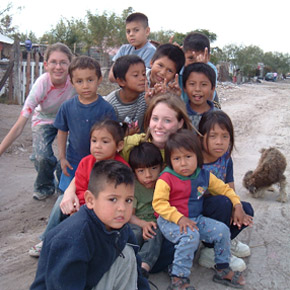BACKGROUND DOCUMENT: THEMATIC FOCUS: TWENTY-FIVE YEARS AFTER THE ADOPTION OF THE CONVENTION ON THE RIGHTS OF THE CHILD: “BUILDING PEACEFUL ENVIRONMENTS”
The Pan American Cong ress meets every five years and promotes the sharing of experience and knowledge in specialized subjects among the member states of the Inter-American System, in order to establish a regional agenda for the development of the promotion and protection of children in the Americas and the Caribbean.
ress meets every five years and promotes the sharing of experience and knowledge in specialized subjects among the member states of the Inter-American System, in order to establish a regional agenda for the development of the promotion and protection of children in the Americas and the Caribbean.
Among the subjects to be addressed by the most senior authorities in child-related issues in the region during the forthcoming Congress is the 25th anniversary of the Convention on the Rights of the Child, viewed from the perspective of building peaceful environments.
The Convention on the Rights of the Child introduced a new paradigm which called for a transformation of children’s place in society by considering them to be holders of rights with the capacity to be active social agents, thus overcoming the doctrine of the irregular situation.
Twenty-five years after that historic event, a quick glance at the reality of the American continent shows the coexistence of progress and challenges in relation to the implementation of the Convention. The additions to national legislations that took place in the nineties were followed by – in the new century – significant progress in the concern exhibited by many of the States in the region regarding the instrumentation of public policies based on rights, together with – to a certain extent – an increase in the investment in childhood. Still lagging behind, however, are the cultural transformations necessary to promote respect for the dignity of children as complete persons.
In its Article 19, the Convention establishes what has become known as the “Right to Non-Violence”: States Parties shall take all appropriate legislative, administrative, social and educational measures to protect the child from all forms of physical or mental violence, injury or abuse, neglect or negligent treatment, maltreatment or exploitation, including sexual abuse, while in the care of parent(s), legal guardian(s) or any other person who has the care of the child.
As a result of its concern at the alarming extent and intensity of violence targeting children, in 2011, the Committee on the Rights of the Child issued its General Comment Nº 13. With it, the Committee promotes a global approach for the application of Article 19, providing guidelines for States Party to prohibit, prevent and respond to all forms of violence against children.
The Committee on the Rights of the Child and its rapporteurs have focused intensely on national coordination frameworks involving violence against children and offered recommendations on the development of effective nationwide coordination.
The World Report on Violence against Children submitted to the General Assembly of the United Nations by Paulo Sergio Pinheiro has made it possible to convey a key message: “No form of violence against children is justifiable and all forms of violence are preventable” The study proposes twelve recommendations, of which three have been chosen as priorities: the creation of national means of coordination, legislative reforms to ensure the protection of children against all forms of violence, and the creation of information and data systems in support of public policies, strategies and comprehensive plans in this area.
In this context, the Inter-American Children’s Institute, as the specialized OAS body for children’s policies, proposes that the subject of violence and the creation of a peaceful environment should be the core topic for the 21st Pan American Congress. In addition, that the Congress should constitute an opportunity for discussion and the design of proposals to contribute to the difficult, but unavoidable purpose of developing a culture of full respect for children and their rights.